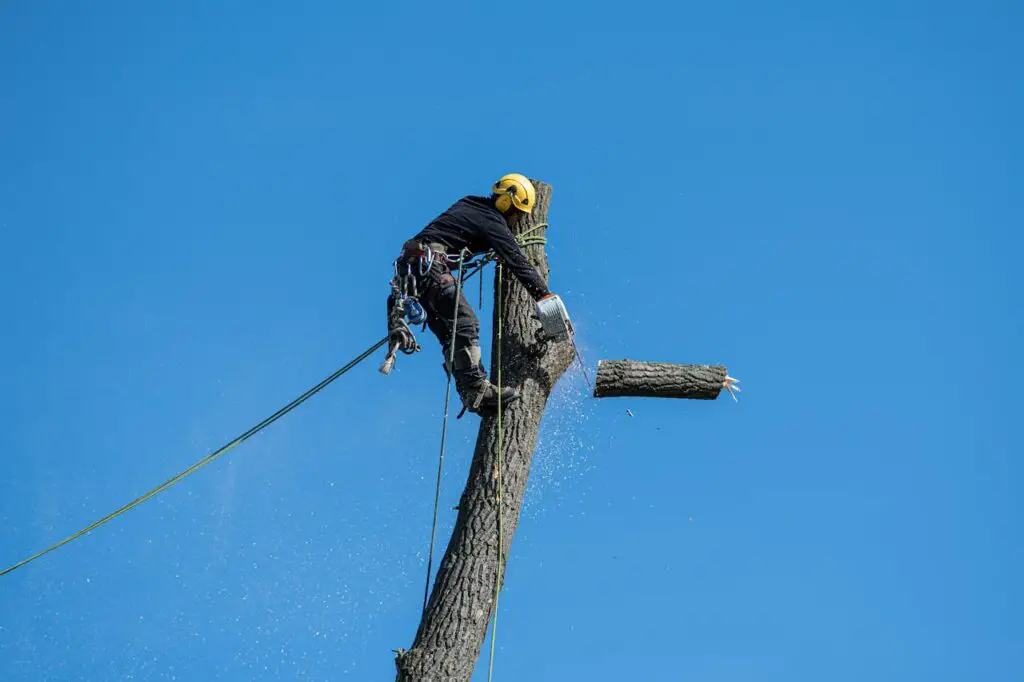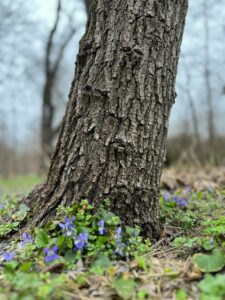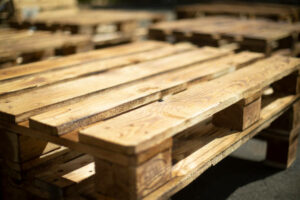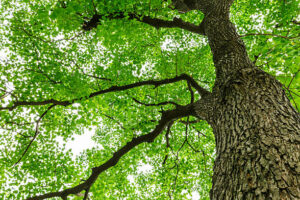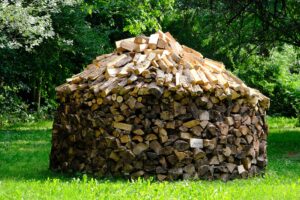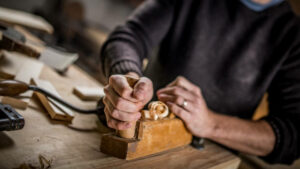If you plan to work with tree service professionals, it’s a good idea to brush up on some tree-cutting terminology used in the tree surgery industry. This glossary covers basic terms that will help you understand what is involved with tree cutting.
Deadwood – Non-living dead branches or stems due to natural aging or external influences. This should be retained as it is vital to some wildlife species.
Felling
Felling is the term used to describe the cutting down of a tree. This is a very dangerous task and should only be undertaken by trained professionals. A mistake made during felling can lead to significant property damage or even death. The first step in the tree pruning process is to inspect the tree and ensure that it can be felled without posing a safety risk. This includes ensuring that there are no buildings, power lines, or anything else that could be damaged if the tree were to fall in the wrong direction.
Once this is done, the sawyer will prepare the tree for felling by creating a notch in the tree growth trunk. This notch will be deep enough to allow the sawyer to establish a hinge that will guide the tree as it falls. The notch must be cut precisely to ensure that it will function correctly. In addition, the sawyer will create a backcourt that will meet with the notch and help guide the tree to fall in the desired direction.
This is also a good time to examine secondary branches of the tree for any loose or dead limbs that could fall onto the sawyer during the felling process. Loose limbs are a common cause of serious injuries during tree cutting and should be removed as soon as possible. The final step is to ensure that the area in which the tree will be falling is clear of any objects or people that the tree could injure if it were to fall in the wrong direction.
While the terminology used by professional tree cutters may be intimidating to those who aren’t familiar with it, the basic terms are fairly simple to understand. By familiarizing yourself with the various terminology, you will be better equipped to assess your tree’s condition and determine whether or not it requires cutting. You will also be better able to communicate with your professional tree cutter and make sure that they are using the proper techniques. The more that you know, the safer and more efficient your tree-cutting will be.
Pruning
Pruning is the process of trimming a tree or shrub to remove dead or damaged branches, improve the structure of the plant, and encourage new growth. It is also important for maintaining the health of a tree, as it can help reduce the risk of damage or disease by removing crossing or weak branches and preventing the build-up of moisture within the canopy. Pruning is an essential aspect of any landscape or tree maintenance plan and should be carried out regularly to ensure that the trees or shrubs are healthy, safe, and aesthetically pleasing.
When it comes to pruning, several terms need to be understood. Some of these include:
- Crown/canopy reduction – This is the removal of any non-foliage-bearing portions of the crown lifting a tree, usually done for safety reasons. This can be done either to the entire crown or just to specific limbs that are a potential risk.
- Coronet cut – This is a style of pruning that mimics the appearance of a natural fracture, typically used on evergreens and deciduous species. It is designed to shorten the limbs in the crown and promote tree growth while retaining the branch collar and promoting a quick healing wound.
- Dormant – The inactive state of a tree that is characterized by the loss of leaves (except for evergreens). The tips of the leaf’s falling branches will start to show signs of decline and may progress, stabilize, or reverse.
- Formative pruning – This is the pruning of a young tree to maintain a desired shape, often done in the early stages to avoid the need for heavy pruning later on. This is generally performed on hedging and shrubs of young trees, both evergreen and deciduous.
- Lopping tree trimming / topping – The cutting back of the whole main stem or crown of a tree to a specified height, often done for safety, aesthetics, or ease of maintenance. This is a highly dangerous practice and should only be undertaken by experienced professionals using MEWPs (Mobile Elevated Work Platforms).
Topping is generally carried out when a tree has been neglected for some time; it can cause irreparable damage to the tree and can also lead to insect infestations. If the regrowth from tree topping is not managed correctly, it can lead to a significant decrease in tree health and vigor. It should only be carried out if permitted by the Local Planning Authority, as it can be a criminal offense to carry out this type of work on trees protected by a Tree Preservation Order or within a Conservation Area.
Stump Grinding
When a tree is cut down, it leaves behind an unsightly stump. Stump grinding is a process that eliminates the old stump by shredding it into small wood chips using a high-powered grinder. This is a highly dangerous operation that is best left to the professionals, and even they must take precautions such as wearing protective gear like gloves and safety goggles. The machine can also shred and pulverize rock, soil, and other debris and should always be operated with caution near people, structures, and utility lines.
A professional stump grinder can grind a tree stump to a depth between 6 and 8 inches below ground, including surface roots. It can also be used to grind down the mound of earth created by a root flare or to level the old stump to ground height, although it’s important to understand that grinding tree stumps is not a replacement for stump removal. A pro should carefully evaluate the site before performing this service to ensure that the machine or its debris won’t damage other trees and shrubs, that there aren’t any underground utilities nearby, and that the stump is a good candidate for grinding.
Unlike total removal, which can take hours to complete, stump grinding is a much faster and more efficient option. It can be done in just minutes, which makes it a popular choice for homeowners who want to reclaim their yard space and get rid of the unsightly remnants of past trees. A stump grinder can also be a helpful tool for clearing out a backyard for a new patio, pool, or deck area.
Once the stump has been ground, the resulting mulch is a valuable resource. It can be spread over flower beds, vegetable gardens, and other garden areas to help retain moisture and suppress weeds. This is especially useful when a new plant needs to be established. Adding some high-nitrogen fertilizer can help encourage new growth. Be sure to keep in mind that a layer of 3-5 inches is ideal; however, this mulch will eventually break down and should be replenished as needed.
Crane-Assisted Removal
When a large tree is located in a tight spot or near buildings or power lines, crane-assisted removal may be the best or only option. While this method requires a large crane, it can reduce the risk of damaging structures or people by allowing sections of the tree to be removed in small pieces rather than in one felling motion. It also allows a trained and experienced team to dismantle the tree faster than traditional methods, which is important in situations where time or weather is a factor.
The first step in crane-assisted removal is assessing the site and creating a plan. This includes determining the condition of the tree, whether it’s live or dead, and how it’s positioned in the ground-level surrounding landscape. A crane expert will also inspect the area and look for a good path to reach the tree, identifying any obstacles or limiting factors such as grade/elevation changes, overhead utilities, distance from landing and picking areas, etc. The crew will also discuss safety issues and make sure the crane is set up in a safe place for the operator to remain within sight of the tree climber, ensuring their safety.
Climbing a tree to cut it down is a dangerous task and requires the utmost skill and judgment of an arborist. A climber will secure themselves to a point on the tree with a safety line (also known as a “lifeline”) and use hand signals to communicate with the crane operator to guide them to the correct spot to cut. Once the cut is made, the climber will rappel down to lower branches of the tree and reconnect their lifeline to a secure point where they can be lifted back up by the crane and lowered to the ground for removal.
Another common tool used in this type of tree work is a bucket truck, which is similar to the vehicles you see utility companies using to get workers to power. A bucket truck enables the independent tree worker to be safely lifted off of the ground in a vehicle to reach hard-to-reach spots that would otherwise be difficult to access on foot or with a ladder.
